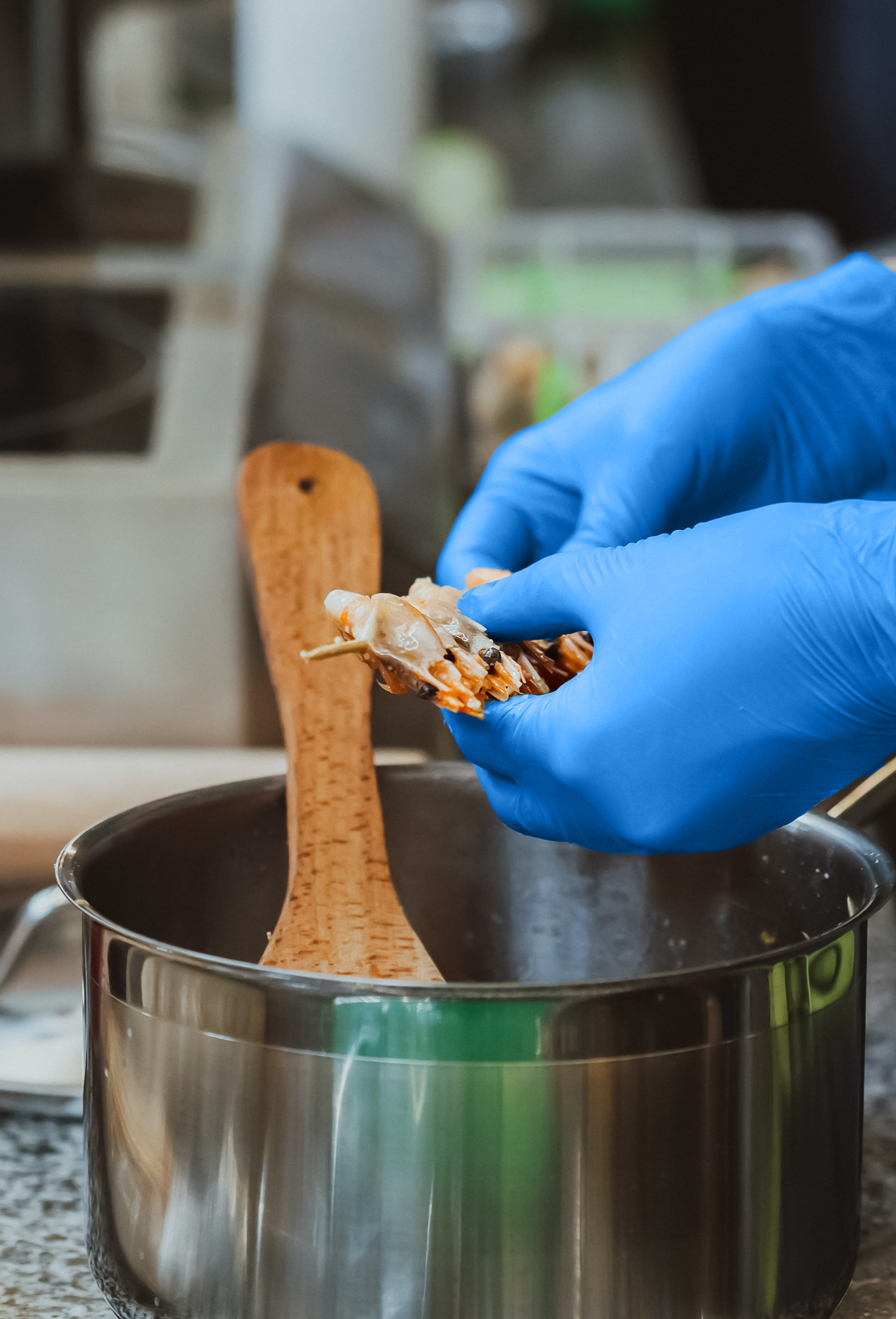Glove Intelligent Assistant
03.28.2023

If you’ve ever sat down to eat at a restaurant or ordered from a food establishment, you would want to know if the food is prepared safely. Every time you eat out, you could potentially be at risk of acquiring a foodborne illness. Foodborne illnesses are not always fatal but they can be an uncomfortable and common occurrence. The Center for Disease Control (CDC) estimates that around 48 million people contract foodborne illnesses each year while around 128,000 are hospitalized.

What are the most common foodborne illnesses?
Most often people contract the Norovirus, Salmonella, Clostridium perfringens, Campylobacter, and Staphylococcus aureus. The Norovirus is a contagious virus that causes symptoms of nausea, stomach pain, vomiting and diarrhea. These symptoms last between 1-2 days. Anyone can contract the norovirus through direct contact with an infected person but most often it is contracted via consuming contaminated food or water sources. Another common way of getting this virus is touching contaminated surfaces then touching one’s mouth with their unwashed hands. Salmonella has similar symptoms of stomach pain, vomiting and diarrhea. It is a bacteria commonly found in the intestinal lining of humans and animals. Consuming contaminated water or food sources is usually how people end up falling ill from this strain of bacteria. The symptoms typically last 4-7 days but usually go away without needing additional antibiotics.
Clostridium perfringens, Campylobacter, and Staphylococcus aureus are also bacteria strains that can be spread as foodborne illnesses.The Clostridium perfringens bacteria strain produces a toxin in the body that can lead to diarrhea. The bacteria makes spores in order to survive high temperatures, dryness, and other environments that would usually eradicate bacteria. Then the spores can transform into active bacteria in food that is being kept in unsafe temperatures. The CDC reports this being between 40-140 degrees Fahrenheit. The Campylobacter bacteria strain usually manifests symptoms of fever, stomach cramps, and diarrhea. The symptoms typically last around a week.
Campylobacter can be carried in the intestines, liver, and other organs of animals which are then transferred to other edible parts when an animal is slaughtered. People can come into contact or ingest this bacteria from improper food prep. A cutting board used to cut raw meat carrying the bacteria, which then is not washed before preparing other dishes, causes contamination in the food prep pipeline. A customer who consumes the end product would be exposed to the bacteria.
Lastly, the Staphylococcus aureus or better known as the staph bacteria. The Staph bacteria produces toxins that result in food poisoning. The usual symptoms are similar to the previously mentioned foodborne illnesses: vomiting, nausea, stomach pain, and even some cases of diarrhea. Staph bacteria can be killed with exposure to high temperatures but the toxins are not completely removed. Foods that are not fully cooked or stored at improper temperatures can carry the toxins created by Staph bacteria. Those who carry it on their hands can also transfer the toxins if they do not consistently wash their hands before handling food; as, about 25% of people or animals carry the Staph bacteria on their nose, according to the CDC. The illness can last anywhere from 1-3 weeks. Obviously, with this information, the average consumer wants to know how they can protect themselves from these foodborne illnesses.

In 2010, the National Institute of Health published a paper (ECD Todd et al) which discussed the role that food workers have in preventing the spread of foodborne illnesses with proper glove usage. The paper finds that food workers who used gloves properly in the face of foodborne illness outbreaks substantially reduced opportunities for food contamination. As of 2023, this is a common procedure during food prep in many food establishments that have been practicing great care to reduce the spread of both standard foodborne illnesses and COVID. However, there is a debate between using disposable vinyl or industrial gloves versus using nitrile disposable gloves.
The food industry is fond of using vinyl disposable gloves when handling food prep as they are cheap and offer temporary protection. Yet, vinyl is not an adequate material for against pathogens nor is it a durable material. The slightest stress results in tears in the material. Nitrile allows for a better glove fit, more elasticity, more heat resistance, and greater puncture resistance. Using nitrile gloves can lead to fewer work related injuries. The material is also more resistant to water, oil, and various solvents. While nitrile gloves might be more expensive at face value, they can last far longer than vinyl gloves and offer more protection in all areas. It is far better to plan for a means of prevention than to deal with the consequences of a foodborne illness outbreak.